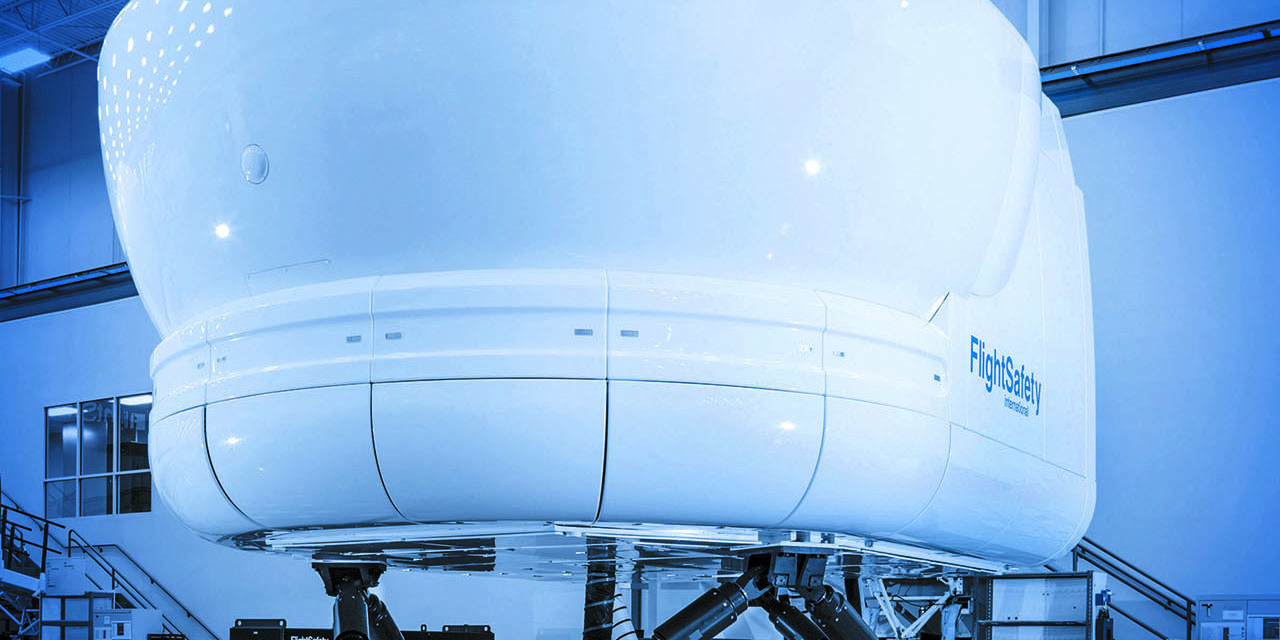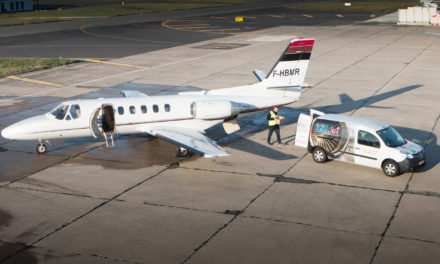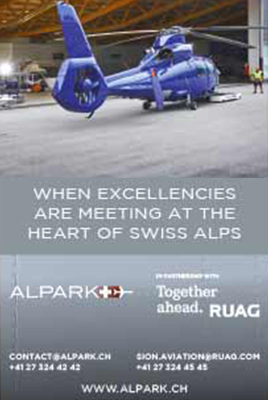Training in NCC operations
Very much like commercial air transport (CAT) operators, according to EASA AIR OPS (Regulation (EU) 965/2012) non-commercial operators of complex motor-powered aircraft (NCC operators) having their principal place of business or residing in any EASA member state are required to be compliant with a set of regulatory requirements which are common across all EASA member states. The scope of the regulations includes training and NCC operators are required to develop and maintain a training system. This requires significant commitment and effort and a set of best practices should be followed.
Training development and outsourcing
“Companies’ training in NCC operations need to be familiar with the EASA regulations in Annex VI to EASA AIR OPS. These regulations pertain to all NCC operators, regardless of size”, says Paul Ozmer, Regional Director, Training Operations, FlightSafety International.
EASA AIR OPS states that for NCC operations the operational and licensing rules should be tailored to the complexity of the aircraft. “A related definition should be set out. Stated that, the regulator has understood that the type of operation can differ very much between individual NCC operators. Therefore, also training needs may differ widely and even change during the years of flight operation” says Ola Hansson, managing director at Lufthansa Aviation Training. “It is therefore recommendable for small NCC operators to look for a good partner which is providing state-of-the-art training. When it comes to choosing the right partner for training, it is important that NCC operators make sure not only to find evidence of the expertise in proper crew training but also that the partner provides a well-thought-out training philosophy leading to a streamlined training system”.
According to Jonathan Shooter, managing director of OysterAir the training system of any NCC operator should be created around the specific needs of the operator whilst incorporating regulatory requirements. “A ‘one size fits all’ approach whilst legally compliant, often leaves gaps in the knowledge base of the pilots being trained, it also wastes a valuable training opportunity”, he says.
Hansson recognises that it is common these days that training responsibilities are outsourced to a certain extent. “This includes planning and licensing of the crew and interaction with the respective regulator. In the airlines sector we even see now the first companies contracting their whole training to trusted training providers”, he says.
OysterAir, for example, delivers RVSM, NAT HLA, CRM, LVO training, in addition to approved training organisation (ATO) class and type rating courses at the facilities of Oriens Aviation. “If the NCC operator has suitably qualified instructors/examiners on staff, licence revalidation and take-off and landing training can be conducted ‘in house’. Initial class/type training and licence renewals must be completed at an ATO”.
One of the most effective ways to create a tailored training programme is to first partner with a training provider and then identify the key learning goals and integrate these with the mandatory check items. “The safety management system (SMS) plays a key role in identifying risks and safety trends which can be mitigated against by building training modules within a recurrent training package. This level of integration requires a close working relationship with an ATO where the training package is discussed about one month prior to the training event”, says Shooter.
One way recurrent training can be maximised for the operator is when annual training requirements are discussed with the customer/operator’s chief pilot, combined with scheduling. “Theoretical knowledge modules are then created and loaded into our Learning Management System for the pilots to complete as home study. The theory modules cover regulatory items such as low visibility operations, adverse weather, in addition to customer requested specific items such as short field take-off and landing operations. A training plan is then devised covering both regulatory and customer requested items”, says Shooter. “The course instructor reviews the plan and then delivers the training and licensing revalidation check items. At the end of the training event the pilots are asked for electronic feedback on whether the training improved their knowledge/skills/proficiency. This ensures a closed loop process is used to identify training effectiveness”.
Learning best practises
Aviation has always been a learning industry. Today’s aircraft and simulators are capable of anonymously collecting data from several trigger points while a flight or a training session is taking place. « This data collection is the basis for evidence based training but requires the consent of all parties involved. If this approval is given, a high volume of data can be used to find common trends and to further improve crew training. As many training providers like Lufthansa Aviation Training do, these improvements are applied to the whole training system rather than only to certain sessions. Best practice is applied in that way also to NCC operator training. The more training categories the provider offers, the more refined its best practice for general crew training will be », says Hansson.
.
“Best practises can be taught by training with a large training organisation like FlightSafety. Large organisations conduct a large amount of training on each type of aeroplane they train. This results in a large amount of knowledge that can be passed on to all clients with regards to aeroplane operation”, says Ozmer.
Indeed having a close working relationship with a professional ATO ensures that current regulatory guidance and best practices are incorporated into training. “It also provides a source of help/advice throughout the year should questions arise on regulatory matters, procedures, etc. Operators can also sign up to receive guidance material from their relevant national aviation authority”, says Edwin Brenninkmeyer, chief executive officer of Oriens Aviation.
Interpreting regulatory requirements
Sometimes regulatory requirements can be very general and can come with limited implementation guidance; this is another area where working closely with a large training organisation that is fully aware of all regulatory training requirements. “For instance we offer a Phase Recurrent Course for NCC operators that will allow the pilots to train on all systems during a 3-year phase. This allows a deeper knowledge base to be trained during each training cycle”, says Ozmer.
“Regulatory interpretation is best completed with the support of an ATO as they have to keep abreast with regulatory changes and guidance material”, says Shooter. “The ATO have the nominated persons who are used to translating regulations which can then be explained to the operator – often with a bespoke solution in order to keep the operator compliant”.
Another good way to get a step further on regulatory subjects is to get in contact with other NCC operators, if possible. “Existing interpretations, which are successful and accepted by the regulator are very often the state-of-the-art and act as living guidance. In addition, when it comes to expertise about interpretation of training regulatory requirements, training providers such as ourselves have a strong background assisting operators in implementing their requirements. With a broad experience through all training services, the appropriate guidance will be provided”, says Hansson.
Training aspects to deepen
NCC operators have distinctive operations requiring that specific training aspects be addressed and deepened. “NCC operators have to identify risks to their operation and use training as a mitigation tool to enhance safety. Training is often seen as an expensive cost to the operation, the reality is that effective training delivers operating efficiencies on all aspects of operational costs – fuel, maintenance, flight planning, insurance, to name a few”, says Brenninkmeyer.
“As there is no standard NCC operator, there is no main crew training aspect for NCC operators too. The most important thing is that a small NCC operator gets training that is tailored to its specific operation with a training provider which is capable to fulfil the requested training due to its expertise and track record. Listening to the customers need is key for a successful training partnership”, says Hansson.
“Small NCC operators need to ensure they are training with a training provider that stresses evidence-based competencies during the training course. This provides a deeper insight into CRM issues that may not normally be evident”, says Ozmer.
Side-bar
Oriens Aviation has accrued knowledge and experience with the Pilatus PC-12-NG, and is now looking forward to presenting the PC-24 to its customers. The PC24 as a twin engined jet operated under the Part NCC regulation structure which brings greater training demands. Oriens has met this requirement with its training partnership with OysterAir to ensure all aspects of the PC-24 introduction and continued operation are met.
Recognising that the majority of it customers are private owners – flying under non-commercial operations (NCC) and that the growth of the SETops industry stands thwarted without a pool of qualified type pilots, Oriens entered into a newly-ratified partnership with the UK’s OysterAir last autumn. OysterAir, headed by Managing Director Jonathan Shooter, is a specialist in high performance aeroplane training. Its trainees will cover certified class rating courses – ground and flight instruction – at Oriens’ headquarters.










